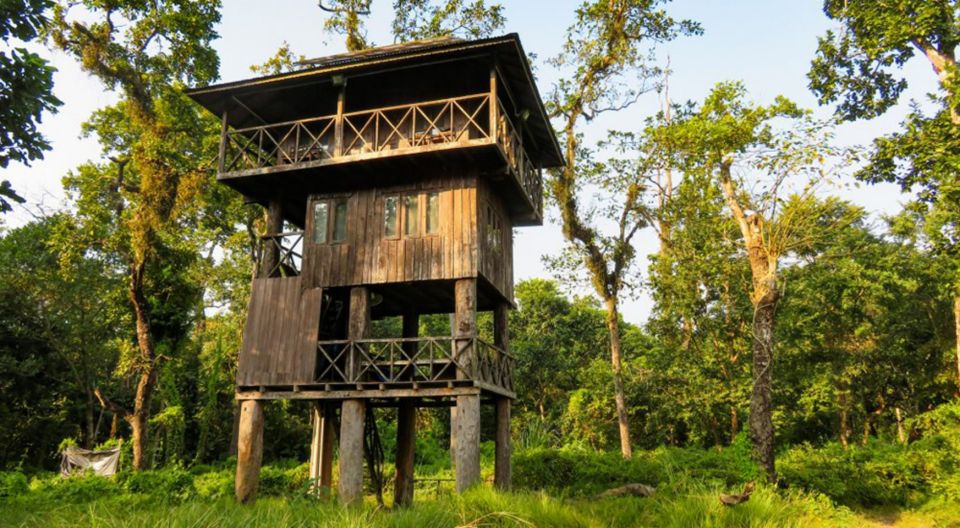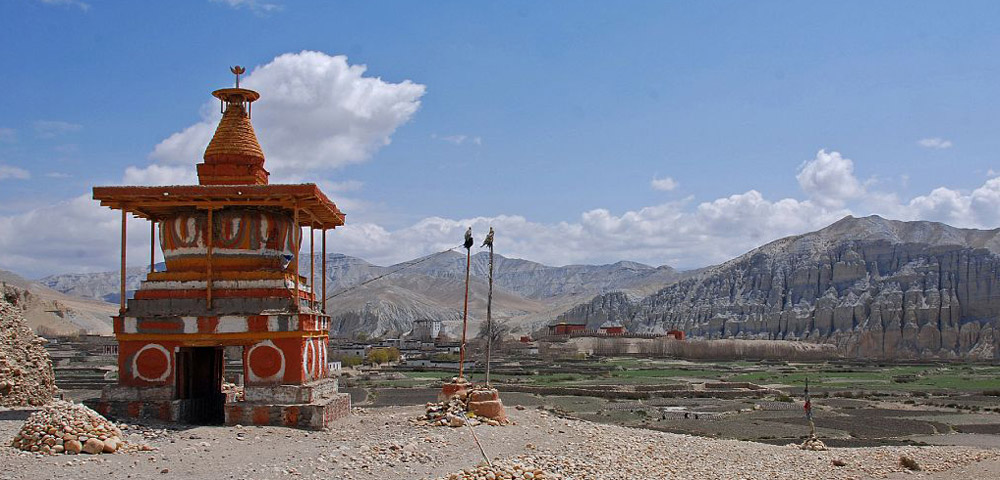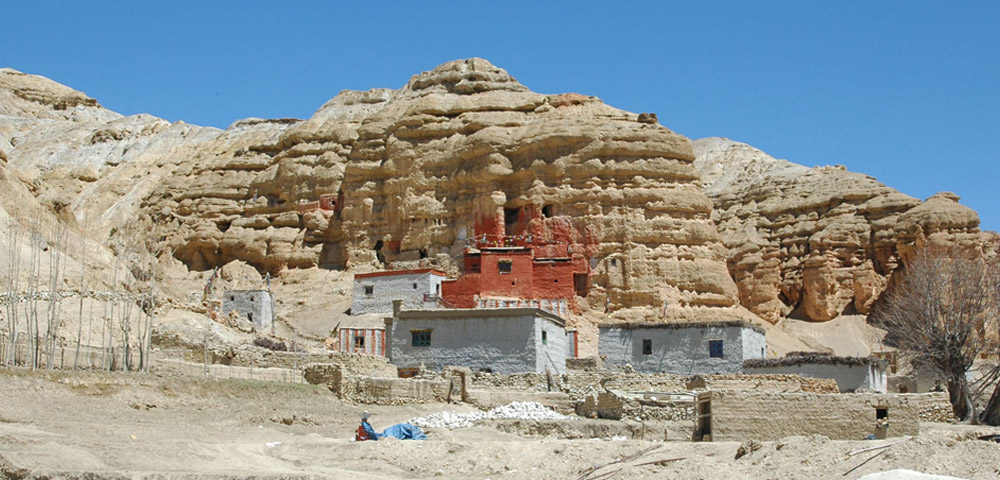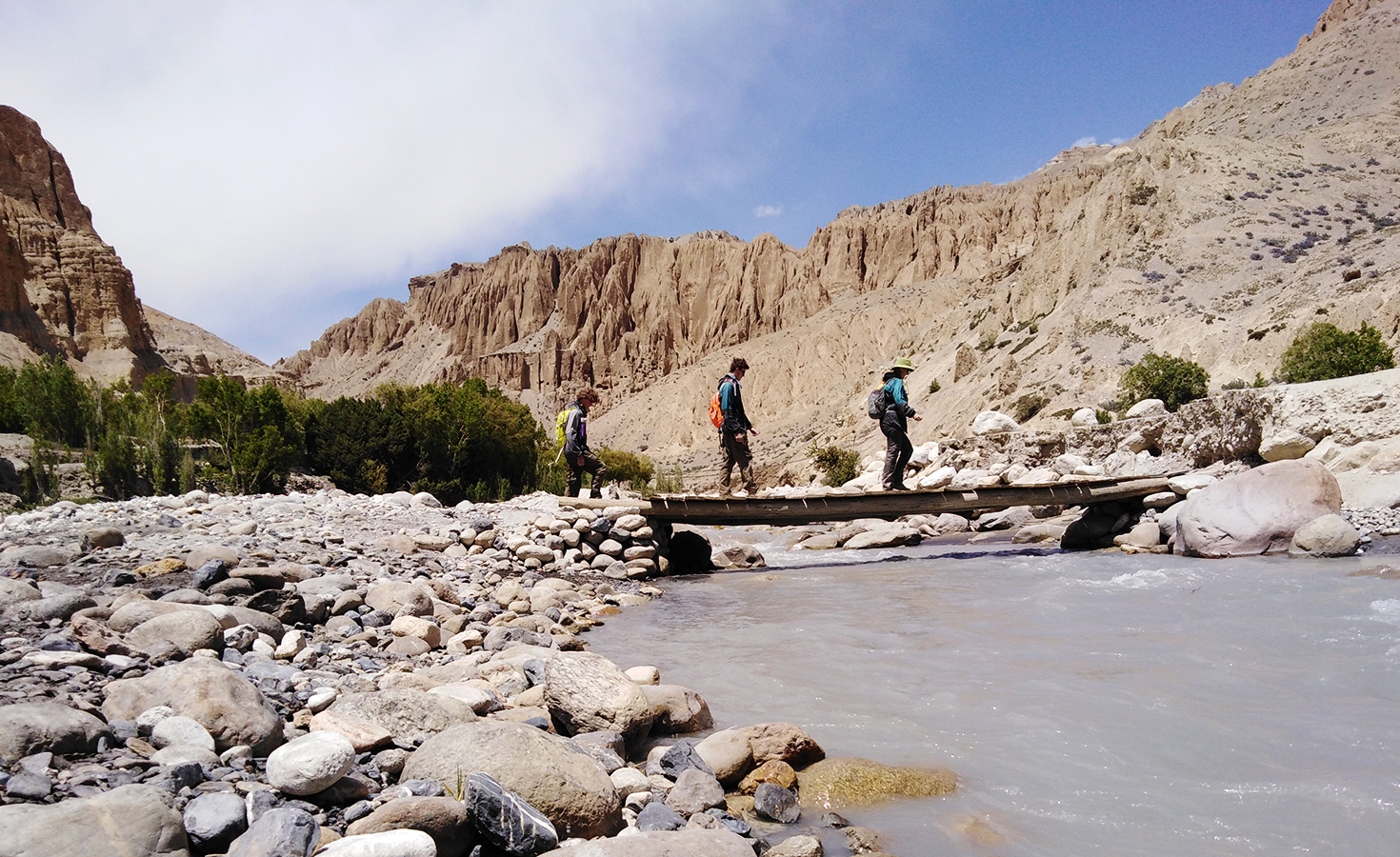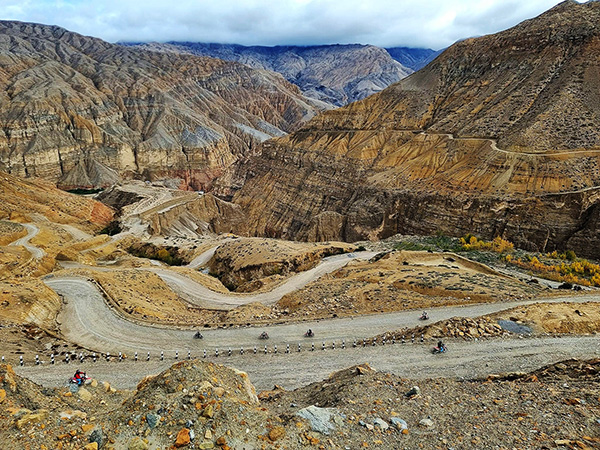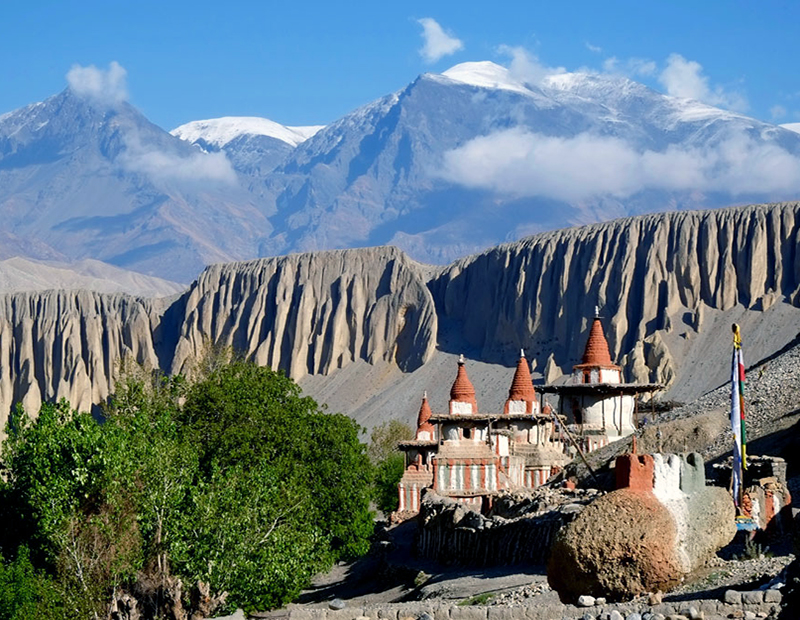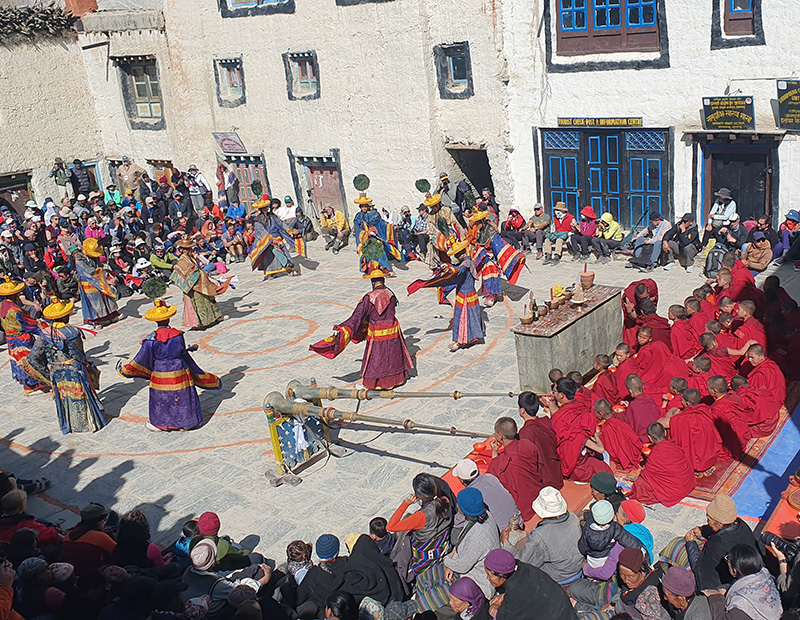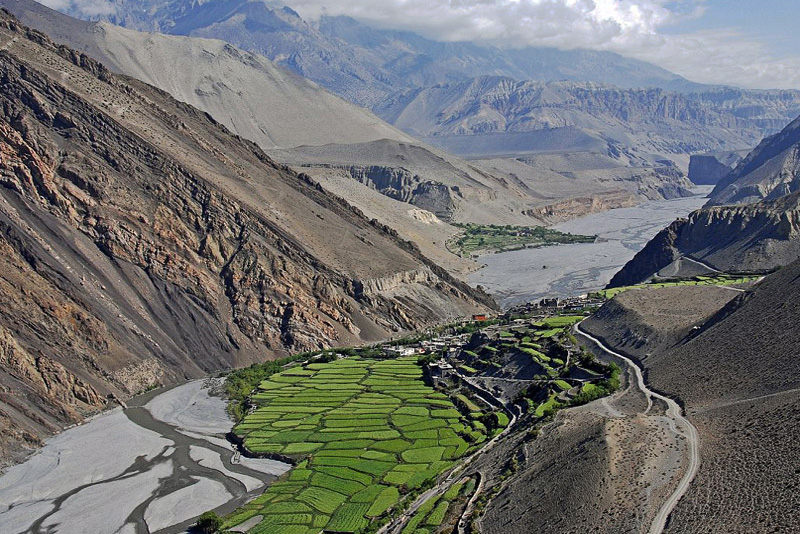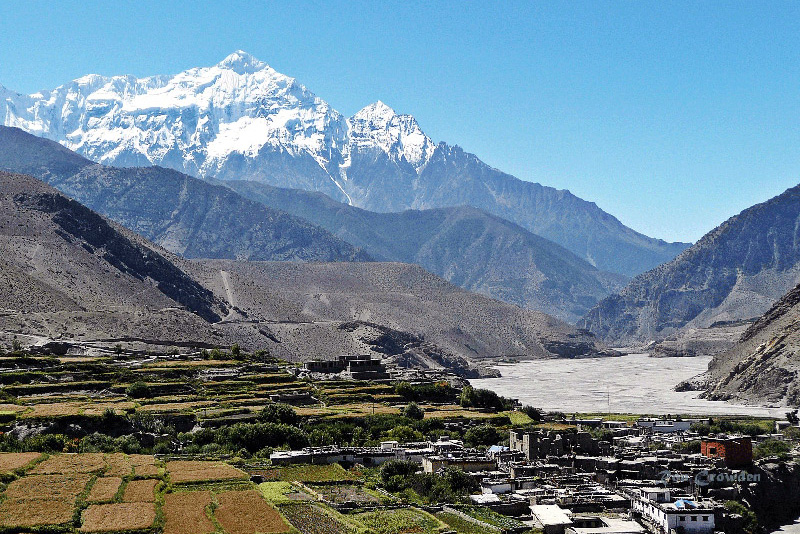Mustang Circuit Trek
The Mustang Circuit Trek, also known as the Upper Mustang Trek, is a unique and captivating trekking route in the Mustang region of Nepal. It offers a combination of stunning landscapes, ancient culture, and a sense of exploration.
Upper Mustang Circuit Trek begins upon arrival at Kathmandu’s Tribhuvan International Airport. Following a short stay in the valley, the journey continues with a picturesque flight to Pokhara and then Jomsom. The flight to Jomsom crosses the world’s deepest river gorge, the Kali Gandaki River. Upon landing in the windy town of Jomsom, the Mustang Circuit Trek begins with a dry terrain hike to Kagbeni. Following Kagbeni, the trail continues beside the Kali Gandaki River, and you will be needed to traverse numerous passes as you explore Upper Mustang’s restricted zones. Lo-Manthang, the walled capital of the erstwhile Kingdom of Lo, will be an alluring destination. Mustang Circuit Trek takes you to historic monasteries and caves that bear sacred significance for the people of the last prohibited Tibetan Buddhist country. You will traverse multiple tight alleys, herds of farmed animals, and vast walls of prayer wheels along the way. Mustang Circuit Trek includes Nepal’s most distinctive environment and provides insights into Buddhist practice.
Mustang Circuit Trek Highlights
Mustang is a mysterious world of the unknown with significant archaeological mysteries, a rich history, and its own distinct culture. Upper Mustang is also known as the “Last Forbidden Kingdom” due to the fact that outsiders were not permitted to visit until 1992, when the Nepalese government abolished the restrictions. Upper Mustang trekking involves the investigation of monasteries dating back a thousand years, caves, canyons, desert splendor, cliff-faced landscapes, native tribes, and their wonderful culture. Here are some reasons why trekkers choose the Mustang Circuit Trek.
Distinct Culture: The Mustang region, often referred to as the “Forbidden Kingdom,” has a unique and preserved Tibetan-Buddhist culture that dates back centuries. The trek offers a rare opportunity to experience this rich cultural heritage, including monasteries, ancient caves, and intricate architecture.
Ancient Caves: The Mustang area is known for its numerous ancient caves, many of which are used as meditation sites by Buddhist monks. The famous caves of Chhoser and Lo Gekar add an intriguing element to the trek.
Scenic Landscapes: The landscapes in Mustang are diverse, ranging from arid desert-like terrain to lush valleys. The backdrop of snow-capped mountains and the barren landscapes create a surreal and captivating environment.
Lo Manthang: The walled city of Lo Manthang, the capital of the former Kingdom of Lo, is a major highlight of the trek. Its narrow alleys, ancient monasteries, and royal palace provide a glimpse into the region’s history.
Restricted Area: The Mustang region is a restricted trekking area, requiring a special permit to enter. This helps in preserving the unique culture, environment, and heritage of the area.
Less Crowded: The restricted nature of the trekking area and the associated permits result in fewer trekkers on the trail, allowing for a quieter and more intimate trekking experience.
Trans-Himalayan Experience: The Mustang Circuit Trek takes you into the Trans-Himalayan region, providing a sense of being on a journey into the heart of the Himalayas.
Photography Opportunities: The stark contrast between the barren landscapes and the vivid colors of prayer flags, monasteries, and local attire creates excellent opportunities for photography.
Cultural Festivals: Depending on the timing of your trek, you might have the chance to witness local festivals and religious ceremonies, adding a vibrant cultural experience to your journey.
Moderate Difficulty: The Mustang Circuit Trek is considered moderately challenging, suitable for trekkers with a reasonable level of fitness and prior trekking experience.
The Best time for Mustang Circuit Trek
The best time for the Mustang Circuit Trek, also known as the Upper Mustang Trek, is during the pre-monsoon spring season (March to May) and the post-monsoon autumn season (September to November). These months offer the most favorable weather and trekking conditions for a successful and enjoyable trek. Both spring and autumn offer excellent trekking conditions, and your choice between the two depends on your preferences. Spring is known for its vibrant flora, lush landscapes, and blooming flowers, while autumn provides clear skies, pleasant temperatures, and cultural experiences. It’s important to note that the Mustang region is at a relatively high altitude, so even during the recommended trekking seasons, you should be prepared for cooler temperatures, especially at higher elevations.
Your journey begins when you arrive in Kathmandu. One of the organization’s officials will meet you at Tribhuvan International Airport. Our private van will then transport you to the hotel.
As Upper Mustang is a foreigner-only restricted area, you will need the permit to pass past the checkpoint. After getting the necessary permits, you drive to the airport and fly to Pokhara in the afternoon. Pokhara is a 20-minute flight from Kathmandu, where you can observe the majestic Himalayas, including Machhapuchhre (6993m), Annapurna massif, and Dhaulagiri massif.
Today, you depart Pokhara and fly to Jomsom on a wonderful journey. Jomsom is renowned for its powerful winds and gorgeous scenery. After some rest in Jomsom, the hike begins with a walk along the Kali Gandaki River’s riverbed. The trail is predominantly level and composed of uneven rocks and sand. On the road to Kagbeni, you can see the summits of the Dhaulagiri (8167m) and Nilgiri (7061m) mountain ranges. Kagbeni is a typical town comprised of tiny alleyways and the ruins of an ancient fortress.
After having your permissions checked at Kagbeni, you enter the Upper Mustang restricted region. The trail runs along the eastern bank of the Kali Gandaki River and consists primarily of sand. On the western bank of the river are some caves. You arrive in Tangbe, a Gurung village where you’ll eat lunch. There are red and whitewashed homes in Tangbe. After crossing the Kali Gandaki River, you ascend the steep trek to reach Chele. Chele is a little community with a breathtaking view of the valley.
The hike today is arduous because to the steep ascents and descents. You will traverse the Taklam La Pass (3624m) and Dajori La Pass (3735m) before descending to Samar through a lovely path. Rachung Cave is roughly two hours from Samar. It is a cave that appears to be adhered to the vertical wall. The path traverses a grove of green shrubs and little trees. Crossing a river, you then descend along a ridge to reach Syangboche.
You ascend to a tiny pass in the morning, from where you can see the Ghiling valley spread out in front of you. Then you pass past the town of Ghiling and traverse Nyi La Pass (4010m). You continue your journey and pass Mustang’s longest Mani wall. After crossing a stream, you arrive in Dhakmar by way of terraced fields.
You leave Dhakmar after breakfast and ascend a steep, shattered gully before traversing some alpine meadows. You ascend a peak and then continue to descend till you reach Ghar Gompa. Guru Rinpoche constructed one of the earliest monasteries in Mustang in the eighth century. The trail descends from Ghar Gompa to a wooden bridge over Charang Khola. Then, you ascend and continue trekking until you reach a ridge in Marang. You cross Marang-La Pass (4230m) and descend to a little ridge after having lunch here. Following the crisscrossing path, you reach Lo-Manthang, the fortified capital of Bhutan.
Today, you will travel to the strange settlement of Chhosar. You can ride horses or ponies from Lo-Manthang to Chhosar if you so choose. You explore the Niphu Monastery and caves that are around 2,500 years old. Upper Mustang’s Jhong Cave is the largest man-made cave. It is remarkable due to its five-story height and about 40 rooms. These caves conceal the mysteries of generations past, since they are adorned with Buddhist murals and Tibetan writings on parchments protected by weathered wooden coverings. In the afternoon, you return to Lo-Manthang and explore the palaces and fortress of the former capital of the Kingdom of Lo.
You proceed from the picturesque settlement of Lo-Manthang to Yara. First, one ascends gradually till reaching Dhi La Pass (3950m). This location will take one hour to reach. Then, you descend steeply and traverse a canyon to reach the town of Dhi. You reach Yara by descending the colored canyon to its base.
You climb to the Luri Cave Monastery along the river’s path. It is situated at least 100 meters above the ground on a ledge. From the bottom of the valley, a twisting route will lead you to a single entrance that leads to two chambers: the outer chamber and the inner chamber. The outer chamber is a shrine, while the inner chamber features a collection of paintings. It is believed that these paintings were created in the 14th century or possibly earlier. After exploring these halls, you return to Yara by retracing your ways.
Today will be a long and challenging journey. The trail begins with a hard elevation before continuing downward to Dhechyang Khola. Shaligrams (fossilized black rock gathered from riverbeds) can be found anywhere. The trail then ascends steeply and leads to the summit of a minor pass. After crossing a vast plateau, you reach the village of Tangge.
The walk to Chhusang begins early in the morning. Following the crossing of a suspension bridge, a brief river route is followed. Then, there will be a roughly three-hour ascent. After reaching Pa (the shelter house), you take a short break and eat lunch by the little water spring. Then, after traversing numerous tiny passes, you reach the crest of a ridge. As you encounter the strong gusts, you descend precipitously to reach Chhusang settlement.
The final day of the expedition is spent returning to Jomsom. You return the same way you arrived in Upper Mustang. After ascending the rough path to Tangbe, you will drop to the Kali Gandaki riverbed. You reach Kagbeni by walking along the banks of the Kali Gandaki River. Following lunch in Kagbeni, you continue down the motor trail to reach Jomsom.
There will be an early flight return to Pokhara. As you cross over the mountains and canyon of the Kali Gandaki River, the vista is extremely breathtaking. Evenings in Pokhara can be spent along the lakeside or in local pubs and bars.
It is a reserve day in case of flight delays or cancellations, so you can do a quick tour of Pokhara prior to returning to Kathmandu. Phewa Lake is one of the most popular tourist destinations since you may go boating and relax on the beach. Additionally, you can visit the World Peace Pagoda or go paragliding. Then, you return to Kathmandu via flight in the afternoon.
After a hearty breakfast at the hotel, a representative of our organization will accompany you to the airport to connect with your aircraft back home.
- All necessary accommodations as per the itinerary.
- Tea House accommodations during the trek.
- Daily breakfast, lunch and dinner during the trekking.
- All necessary paper works.
- All necessary trekking permits.
- Experienced and First Aid-trained trekking guide.
- Strong, helpful porters.
- Comprehensive medical supplies.
- Trekking map.
- Insurance of all local team.
- Warm clothing and trekking gear for staff.
- Sleeping bag and trip duffle bag.
- Trekking certificate issued by us.
- Welcome and farewell dinner in Kathmandu.
- Nepal Visa fee.
- International flights.
- All meals not mentioned in inclusions.
- Personal expenses not stipulated.
- Optional add-ons.
- Gratuities.
You might also like...
Top Add-on Trips
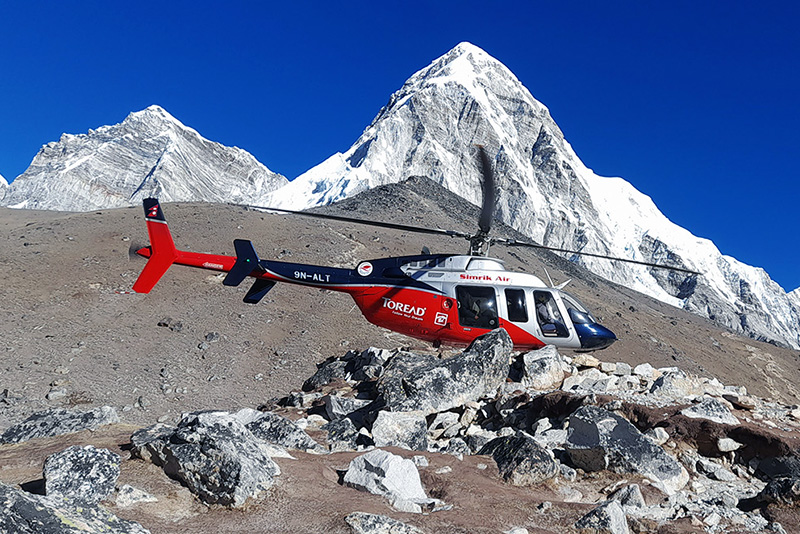
Everest Base Camp Helicopter Tour
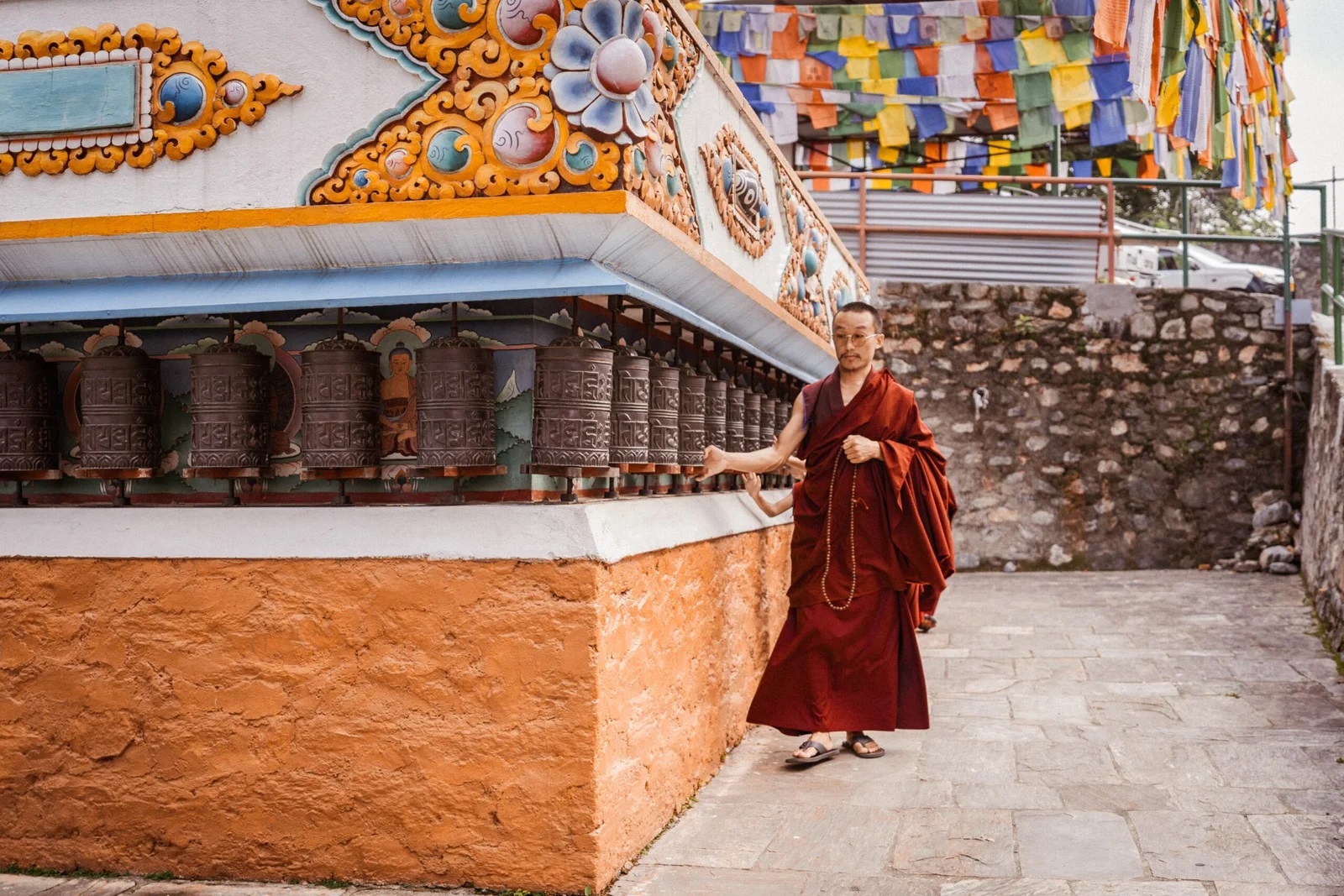
Monastery Stay Tour
